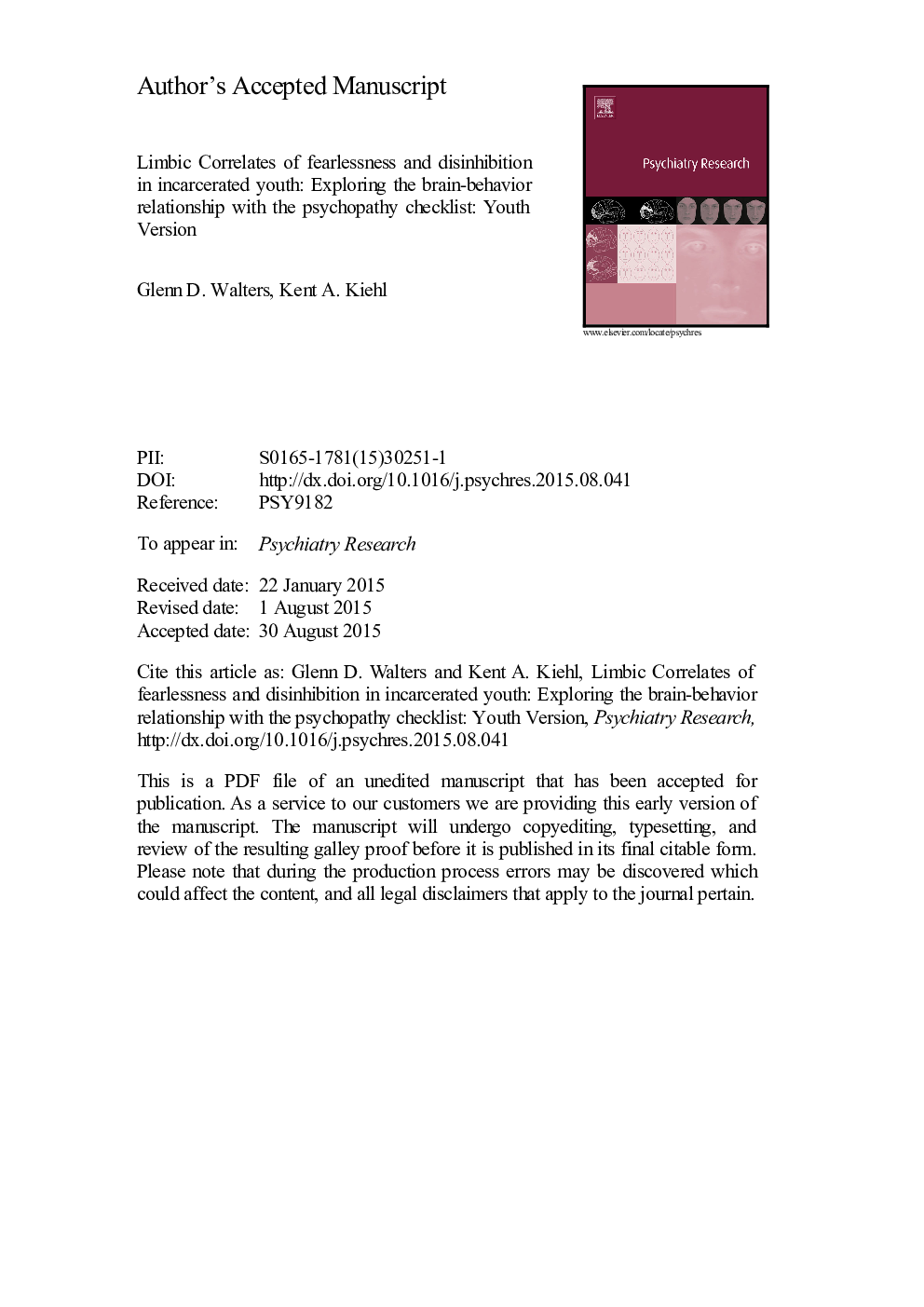| Article ID | Journal | Published Year | Pages | File Type |
|---|---|---|---|---|
| 10303578 | Psychiatry Research | 2015 | 25 Pages |
Abstract
The purpose of this study was to determine whether scores on two temperament dimensions (fearlessness and disinhibition) correlated differentially with gray matter volumes in two limbic regions (amygdala and hippocampus). It was predicted that the fearlessness dimension would correlate with low gray matter volumes in the amygdala and the disinhibition dimension would correlate with low gray matter volumes in the hippocampus after controlling for age, IQ, regular substance use, and total brain volume. Participants were 191 male adolescents (age range=13-19 years) incarcerated in a maximum-security juvenile facility. Structural magnetic resonance imaging (MRI) analysis of the limbic and paralimbic regions of the brain was conducted. The temperament dimensions were estimated with items from the Psychopathy Checklist: Youth Version (PCL: YV: Forth et al., 2003). Analyses showed that the fearlessness dimension correlated negatively with gray matter volumes in the amygdala and the disinhibition dimension correlated negatively with gray matter volumes in the hippocampus but not vice versa. These findings provide preliminary support for the construct validity of the fearlessness and disinhibition temperament dimensions and offer confirmatory evidence for involvement of the amygdala and hippocampus in fear conditioning and behavioral inhibition, respectively.
Related Topics
Life Sciences
Neuroscience
Biological Psychiatry
Authors
Glenn D. Walters, Kent A. Kiehl,
